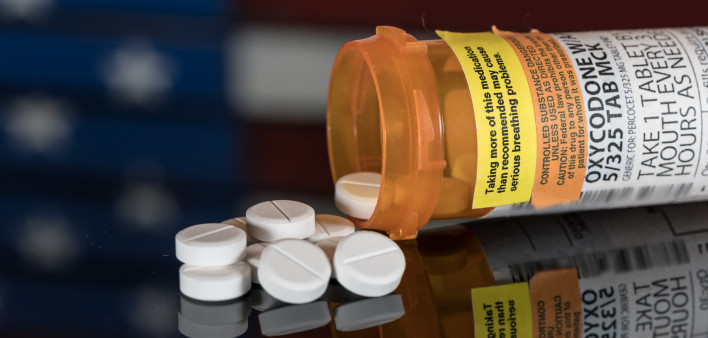The United States has reached another grim health milestone. In a first, drug overdose deaths topped 100,000 in a 12-month period, according to data from the National Center for Health Statistics, part of the Centers for Disease Control and Prevention (CDC).
Specifically, 100,306 overdose deaths were reported between April 2020 and April 2021, a period that overlaps with the COVID-19 pandemic. This amounts to 275 people a day and represents a 28.5% spike from the 78,056 overdose deaths reported in the same 12-month period a year earlier.
According to a CDC statement, most of the deaths—75,673, or 75%—were attributed to opioids, an increase from 56,064 deaths due to opioids the previous year. Deaths related to fentanyl—a synthetic opioid that is especially powerful and dangerous— and other drugs, including methamphetamine and cocaine, also increased.
In fact, fentanyl caused more overdose deaths than all other drugs combined did in 2016, according to The Washington Post. Although officials have seized enough fentanyl to kill 333 million people, CNN reports, the drug has still been found in every state. Alarmingly, it is often made to look like prescription pills—which means, for example, that someone on the street might wind up buying counterfeit Oxycodone laced with deadly drugs.
Naloxone is a life-saving drug that reverses overdoses from opioids, including heroin and fentanyl. Unfortunately, not everyone has access to it or understands how to use it. The White House is promoting efforts to make naloxone more available, as mentioned in this tweet:
Today @ONDCP released a model law to help states expand access to naloxone, a life-saving drug that reverses opioid overdoses. This release comes at a critical time when overdose deaths have reached a record high & gives states a tool to prevent overdoses. https://t.co/nRSDZk6lkm
— ADM Rachel Levine (@HHS_ASH) November 17, 2021
Of course, overdoses aren’t the only negative outcome related to the opioid crisis. Many people who misuse opioids inject their drugs, potentially sharing needles and equipment. Injection drug use is linked to increases in HIV as well as hepatitis B and hep C, viruses that can be transmitted through blood-to-blood contact. What’s more, untreated hepatitis B and C can lead to liver cancer, liver transplants and death.
The 12-month period encompassing the 100,000-plus fatal drug overdoses overlaps with the COVID-19 pandemic, and experts say the financial, emotional and social upheaval of the pandemic fueled the overdose deaths.
“As we continue to make strides to defeat the COVID-19 pandemic, we cannot overlook this epidemic of loss, which has touched families and communities across the country,” said President Biden in a statement about surpassing 100,000 deaths.
“As we grieve those we’ve lost and honor their memories,” he added, “my administration is committed to doing everything in our power to address addiction and end the overdose epidemic. Through the American Rescue Plan, we’ve delivered nearly $4 billion to strengthen and expand services for substance use disorder and mental health. We’re working to make health coverage more accessible and affordable for all Americans, so that more people who need care can get it. We are strengthening prevention, promoting harm reduction, expanding treatment, and supporting people in recovery as well as reducing the supply of harmful substances in our communities. And we won’t let up.”
.@CDCgov’s 4 new campaigns address ways to prevent and reduce drug overdose deaths.
— SAMHSA (@samhsagov) November 16, 2021
???? Learn more about:
1️⃣ the dangers of fentanyl
2️⃣ the risks of mixing drugs
3️⃣how naloxone can save lives
4️⃣ reducing stigma toward drug use & recovery
https://https://t.co/8poyR2GPzD pic.twitter.com/dnKcE7tu1Y
The Washington Post points out that the United States far surpasses other developed nations when it comes to drug deaths. In 2019, for example, for every 100,000 people, Norway recorded 5 drug deaths, Denmark 2.5, Germany 1.7, Italy 0.6 and the United States 21.1.
In the United States, West Virginia leads in the number of overdose deaths per 100,000, with 90 deaths, followed by the District of Columbia (70), Tennessee and Kentucky (52 each) and Louisiana and Ohio (48 each). In addition, substance use disorder is more prevalent among adults in their 20s and 30s.
In related news, check out these recent articles on Hep:
- “White House Now Supports Harm Reduction Such as Needle Exchanges”
- “Meth Overdose Deaths Rise Rapidly Across All Racial Ethnic Groups”
- “$1.5B to Combat Opioid and Overdose Epidemics in New York State”
- “International Overdose Awareness Day 2021.”







Comments
Comments